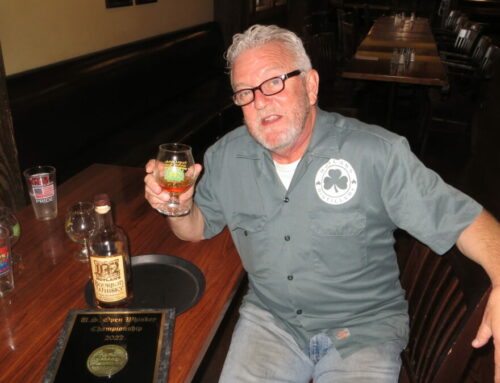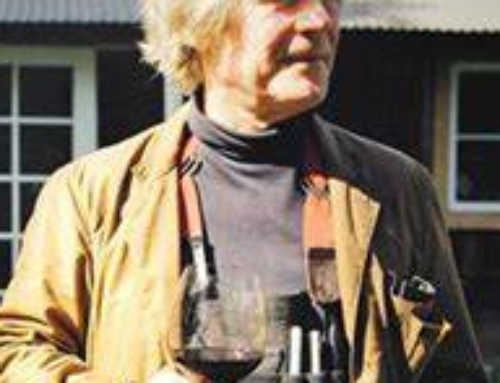When I read the history of the local 209 Distillery I became intrigued. The story goes that one William Scheffler bought a patent for a new
design of pot still in New York in 1870. Moving West he first set up a distillery at Krug winery in St. Helena and then in 1880, purchased his own winery
there. Later, in 1882 he opened a licensed distillery on that property; Registered Distillery 209. That distillery won several awards (including a
prestigious French award for its brandy) before Prohibition closed it and most of the country’s other distilleries.
When Leslie Rudd (of Rudd Winery and Dean & Deluca specialty foods) purchased the property in 1996, he discovered the
old structure with its sign “Registered Distillery 209” still intact. One thing led to another and Rudd decided to resurrect the business in order to make an
artisnal gin.
What a great story I thought, and soon after I made plans to visit the distillery. But, when I punched the name “209” into my GPS, the address that came up was
not in St. Helena, it was in San Francisco. That’s odd, I thought. A little more research and I discovered that there was also no evidence that the original 209
distillery in Napa ever produced gin. These two items coupled with Rudd’s reputation for marketing and pricing hyperbole weighed heavily on my mind as I headed off to the
distillery.
Upon arriving at the Pier 50 location (behind the stadium where the Giants play) I passed a parked vintage 1973 Moto Guzzi Italian motorcycle. My spirits lifted,
anyone who rode a motorcycle like that had to be a hands on sort of guy. Distiller Arne Hillesland is exactly that. In fact he is about the only guy at
209, because the making of the gin is virtually a one man operation. “Except for bottling and workingthe boiler, I can do the whole thing myself,” says Hillesland, tipping back his
porkpie hat to wipe the sweat from his brow.
A refugee from the Silicon Valley high tech industry, Hillesland transferred that attention to detail (statistical process control anyone?) to the distillation process. He
spent a year refining the recipe for 209 using a miniature glass still. Eventually he had it worked down to two recipes and put them to the test by
making just two cocktails; a gin and tonic and a martini.
“The winner is what we see on theshelves these days,” he says.
Typically modern gin is made in two styles. The first is compound gin; in which the botanicals (including the
legally required juniper) are steeped in a neutral spirit, like a tea, and a second, London Dry; in which the botanicals are distilled along with the
spirit. 209 is technically the later, but with one major difference.
“One of the reasons I think a lot of folks didn’t like gin, starting in the 1960s and coming up to the present,
is the big medicinal, sort of bitter, piney nature of a lot of gins,” says
Hillesland.
“So I toned down the juniper and brought up a lot of the citrus and spice notes.”
Those spices: cassia bark, angelica, lemon peel, bergamot orange, cardamom (replaced with bay leaf for the kosher-once-a-year version) juniper and perhaps a few others, combined with a corn based distillate and very pure Hetch Hetchy reservoir water creates a lighter bodied gin that still has all the qualities
that one has come to expect from their Mother’s Ruin.
“It’s a tip of the hat to theLondon Dry, but at the same time recognizes that something lighter goes better
with cocktails,” says Hillesland.
“So many cocktails are citrus based; lime, lemon, grapefruit,” he says. “209, with those citrus notes goes very well with
that.” He then names the Rickey, the Gimlet and the Tom Collins as examples.
His 209 comes bottled in replicas of a 1914 Genever bottle, which is a nod to gin’s Dutch origins, and no doubt,
to Mr. Rudd’s marketing skills (the history is on the back).
But, the product in that replica bottle is an entirely new, lighter, style of gin that makes
great cocktails.
And that is the work of artisan distiller Arne Hillesland.
Here are three new things that I learned from Arne on my visit coupled with his one request.
– “In the UKit is illegal to make your own distillate and then make your own gin, you have to get [the distillate] from a
licensed rectifier first.”
-“A pot still is a fabulous tool to make a flavored spirit but you can’t make a vodka in pot still. It does not happen.
[the proof] doesn’t get high enough.”
-“Spain is the largest gin market inEurope.”
-“Whatever you do, please don’t mix my gin with diet tonic.”
Jeff Burkhart is the author of Twenty Years Behind Bars: the spirited adventures of a real bartender (http://jeffburkhart.net/twenty/), as well as an award winning bartender of a Bay Area restaraunt.


